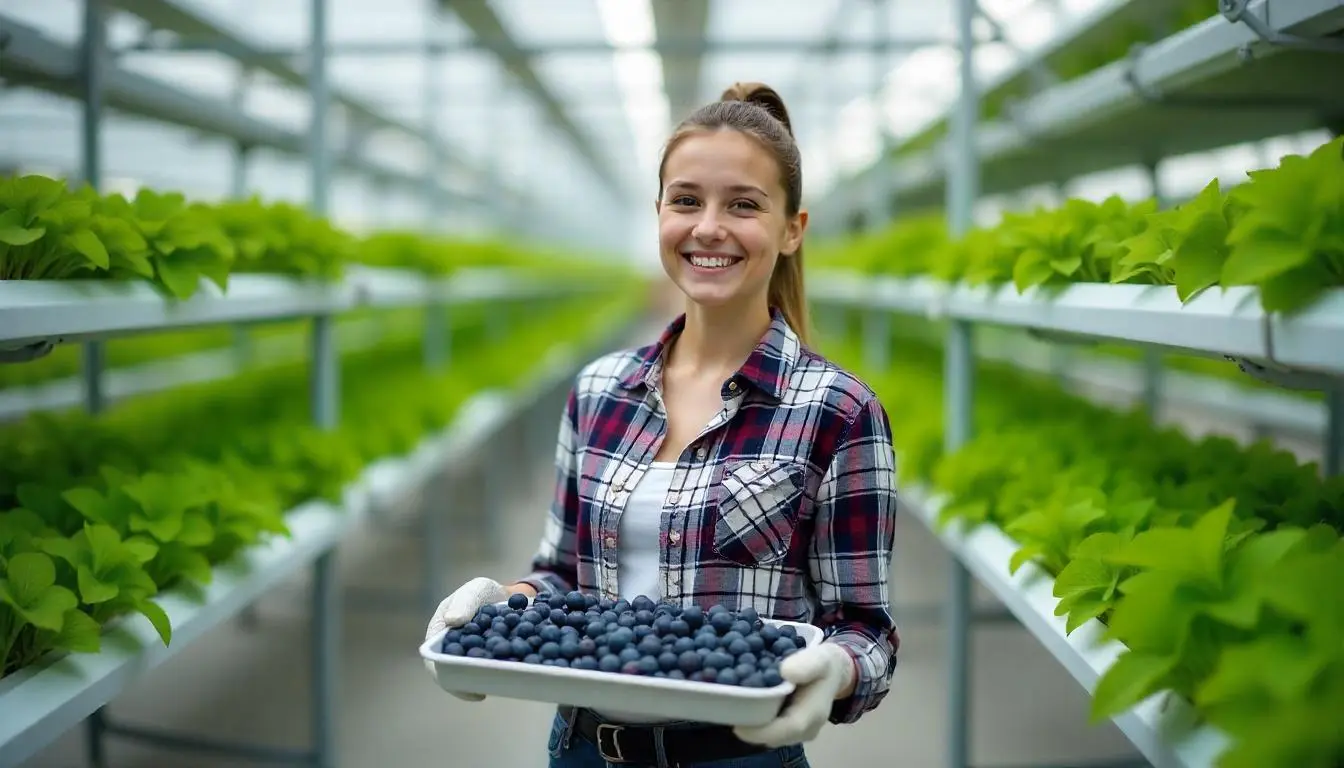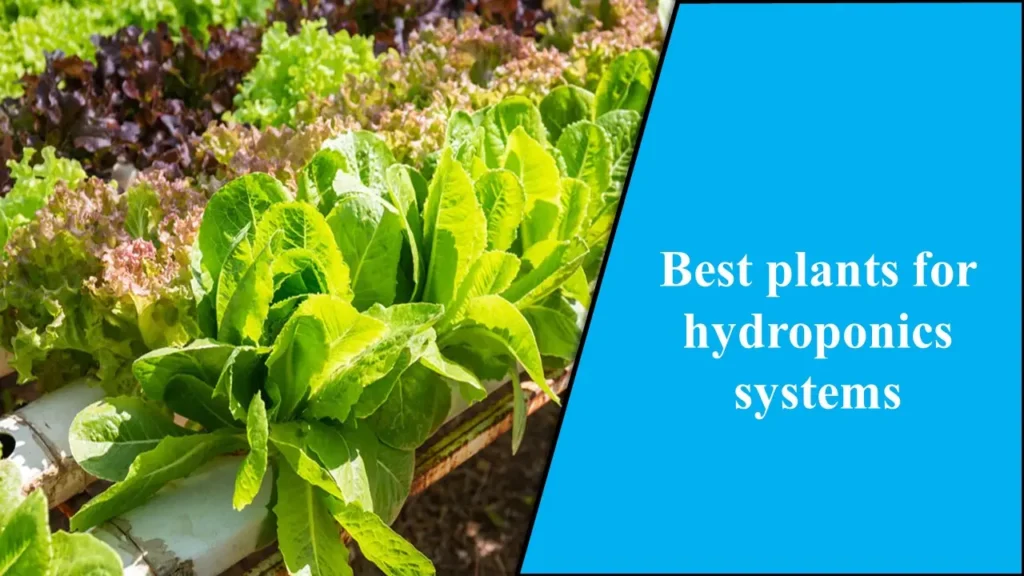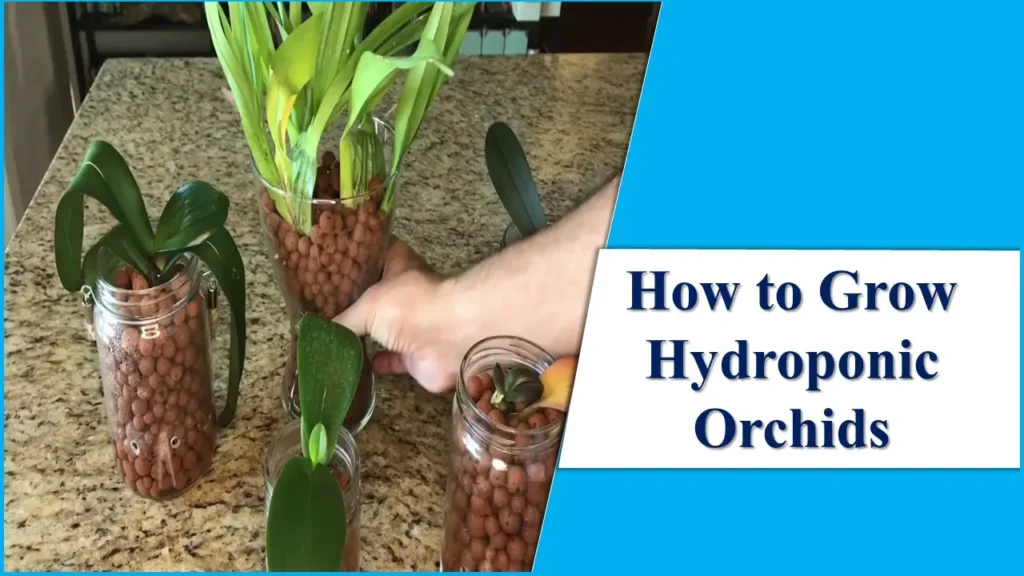Can You Grow Blueberries Hydroponically?
You may have already enjoyed this extraordinary fruit in pancakes, smoothies, muffins, desserts, or yogurt, not just because they’re tasty, but because they’re healthy too.
Blueberries, as the name suggests, are velvety, deep-blue fruits known not only for their delightful flavor but also for their numerous health benefits. They have long been used in cuisines, medicine and natural dyes, and they’re an excellent source of nutrients like manganese, Vitamin K, Vitamin C, and dietary fiber.
Many studies have been done by some of the most prestigious institutions in the world, like Harvard University, to identify and test the potential of blueberries in preventing cognitive degeneration and heart-related diseases. To which it has shown promising results. Whether fresh or frozen, adding blueberries to your diet is a smart move.
Do you want to grow your own blueberries at home, and are limited by space? Then you should definitely learn how to grow blueberries hydroponically to have an unlimited supply of this amazing fruit all year round within limited resources.
Optimum Conditions for Hydroponic Cultivation of Blueberries.
Although environmental conditions are within our control in a hydroponic system, it is essential to regularly monitor and adjust the system.
| Optimum Light | 14–16 hours of light per day |
| Optimum Temperature | Day(72°F to 79°F)Night (60°F to 68°F) |
| Optimum Humidity | 60-70% |
| Growing Media | Usually Prefer Acidic and well-drained medium, so use, Coco peat + Perlite (70:30), Pine bark fines, and Peat moss |
| Optimum pH | 4.5- 5.5 |
| Nutrient Mix | Optimum levels of nutrients – nitrogen, phosphorus, and potassium – as well as magnesium, calcium,, and iron. |
| EC(Electrical Conductivity) | 1.2-1.6 mS/cm |
| TDS(Total Dissolved Solids) | 800–1000 ppm |
| Recommended Varieties | Northblue, Sunshine Blue, Top Hat,Misty, Legacy, etc. |
Steps of Growing Blueberries Hydroponically.
Select Hydroponics System.
You may use any type of Hydroponics System to grow Blueberries. However, it is best to use ebb and flow and NFT or nutrient film technique systems for their easy setup, proper nutrient transfer, and commercial berry production because it takes around 140 days for fruit production in the hydroponics unit. So, a durable and well-monitored is a wiser choice.

Select variety.
It’s best to choose varieties that can be cultivated indoors under minimal care. For hydroponics purposes, the ‘Top Hat’ variety is most suitable; with its compact, low-growing, and abundant fruiting nature, it can adapt well in small spaces. You can adopt ‘Pink Lemonade Blueberry’ for the overall beauty of the plant and its distinct tangy flavor. ‘Perpetua Blueberry’, on the other hand, is best for two harvests each year. And if you are looking for ornamental berries, then just go for ‘Sweetheart Blueberry’.
Other varieties like Misty or Legacy can also be cultivated. While selecting the varieties, also keep in mind the resources available in your unit.
Germinate the seeds or Transplant.
Experts prefer cuttings over seeds for developing new plants, as seeds take much longer(several weeks)time to germinate and may not produce true-to-type fruit. But if you do start from seeds:
From Seeds:
Start by soaking seeds in warm water for 24 hours, then showing them ⅛ inch deep into the soil, maintaining a temperature between 70–79°F under 12-14 hours of daily sunlight. Once the seed germinates, wait for it to develop 4 pairs of true leaves, then transfer it to the hydroponics net pots.
From Cuttings:
Use softwood or semi-hardwood cuttings from a healthy blueberry plant. Each cutting should be 4–6 inches long, with at least 2–3 leaf nodes. Dip the cuttings in rooting hormone to encourage root development. Keep them in a rooting medium like rock wool, peat pellets, or coco-perlite mix and maintain high humidity (85–90%) and indirect sunlight. After the roots, it is ready to be placed in the hydroponics system.
Prepare growing media for hydroponic blueberries
Use a loose mix of peat moss and perlite, pine bark and cocopeat, or Rockwool and coco in net pots for efficient nutrient absorption. Check the media for algae, diseases, and pests and change it timely. You can use these mediums in the following ratio for the best results:
- Peat Moss + Perlite (70:30)
- Coco Coir + Pine Bark (50:50 or 60:40)
- Rockwool + Coco Coir
- Pine Bark + Perlite + Peat Moss (1:1:1).
Just use the media based on locally available media, which results in neutral pH and enough space.
Adjust Light and Temperature
Use a full-spectrum LED light for 12-16 hours daily. Use Moderate intensity(2500–4000 lux) in the seedling stage and High intensity(5000–7000 lux) in the vegetative stage till the fruiting stage. Keep the light source 10–18 inches above the canopy and ensure even coverage of light with proper spacing for uniform production and fruit quality.
Day Temperature between 68°F–77°F and Night Temperature between 60°F–68°F is ideal for blueberry cultivation. Use a Digital thermometer to monitor the Temperature.
Prepare Nutrient Media for Hydroponic Blueberries
Blueberries thrive best in a slightly acidic medium, with a pH ranging between 4.5 and 5.5. Unlike salad crops that need high Nitrogen, Blueberry cultivation needs less nitrogen, high Potassium, Magnesium, and a bit of micronutrients.
| NUTRIENTS | DOSAGE(per 10L) |
| Calcium Nitrate (CaNO₃) | 5–7 grams |
| Ammonium Sulfate (NH₄)₂SO₄ | 1–2 grams |
| Monopotassium Phosphate (KH₂PO₄) | 2–3 grams |
| Potassium Sulfate (K₂SO₄) | 3–4 grams |
| Magnesium Sulfate (MgSO₄) | 2–3 grams |
| Micronutrient Mix (EDTA/chelated)(Fe, Zn, B, Mn, etc) | 3–4 grams |
Feeding Schedule:
| Growth Stage | EC (mS/cm) | Feeding Frequency |
| Seedling | 0.5–0.8 | 1–2 times/week |
| Vegetative | 1.0–1.4 | 2–3 times/week |
| Flowering & Fruiting | 1.2–1.6 | 3–4 times/week |
Maintain a TDS between 800 ppk – 1000 ppm and regularly flush the system to avoid salt accumulation. Carefully observe and adjust the nutrient levels as per the demand of seedlings in the system.
Hydroponic Blueberry Nutrient Solution Calculator
| Nutrient | Required Dose (grams) |
|---|
Feeding Schedule & Guidelines
- Seedling: EC 0.5–0.8 | 1–2 times/week
- Vegetative: EC 1.0–1.4 | 2–3 times/week
- Flowering & Fruiting: EC 1.2–1.6 | 3–4 times/week
- Maintain TDS: 800–1000 ppm
- Note: Flush system regularly to avoid salt accumulation
Pollination.
To obtain fruits in a hydroponics system, artificial pollination is a necessity due to the absence of all types of pollinating agents, including wind and insects. Usually, manual pollination is preferred as accurate and uniform pollination can be done this way. But in a huge hydroponics unit, one can introduce electric pollination to create vibration for the movement of pollens or bumblebees; this may cost you some pennies, but it is something that you must not forget while cultivating fruits in a hydroponics unit.
Management of Hydroponically Grown Blueberries.
Pruning
As Blueberry is a perennial plant, regular pruning and shaping by removing older and dead branches will lead to better quality fruits and higher production. It improves air circulation, provides space for fruits to grow, and allows adequate light penetration in the whole plant. It should be done at the plant’s dormant period, typically in late winter or early spring.
Pest and Diseases.
Hydroponics systems are usually enclosed, leaving no space for pests and diseases. But you might find some of its common enemies like aphids, spider mites, or whiteflies which should be controlled through organic chemicals on observation. Another thing is deformities caused by nutrient deficiency like Blossom end rot due to calcium deficiency and early fruit shed due to potassium deficiency. Such problems are quite common in hydroponic systems, therefore, regularly monitor the nutrient levels in the system and adjust accordingly.
Harvesting.
After transplanting, it may take up to a year to become harvest-ready or 60-90 days after flowering. So if you are planning to grow them out of seeds, it will take 2-3 years. A ripened blueberry is deep blue and should be easily detachable from the stem, and underripe berries are usually firm and reddish or greenish, while overripe berries feel soft and mushy.
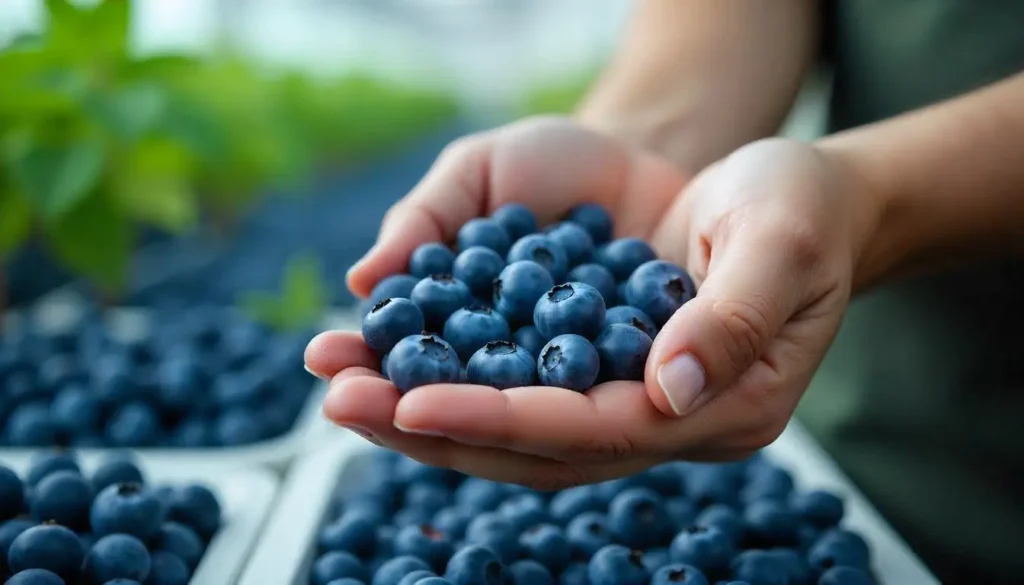
After a year of transplanting, you may expect a yield of 0.5 to 1 kg per plant. In two years, 1.5 to 2.5 kg per plant, and after year 3 onwards, expect 3 to 4 kg per plant annually. Although yield and quality depend upon the environment and nutrients provided to the plants.
Conclusion.
Blueberries are not the easiest plants to be cultivated in a hydroponics system. As it needs to stay in the system for a much longer time to produce fruits. But it sure does utilize the space and efficiently consume the scarce nutrients. Using potted plants from nursery or tissue-cultured plants would be a wiser start for blueberry cultivation on a large scale, and don’t forget about artificial pollination. But, with proper environmental control and knowledge on the fruit quality, blueberry cultivation in a hydroponics system would prove to be an economical and sustainable choice.
Latest Post
- Nutrients Required for Hydroponic Farming

- Types of Grow Light for Hydroponics
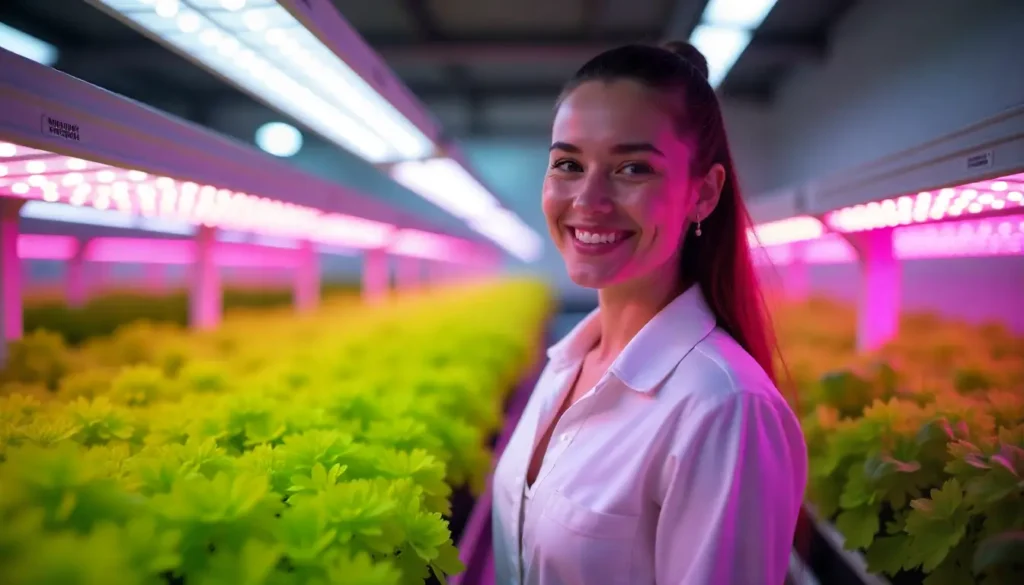
- Factors Affect Nutrient Solution in Hydroponics

- How to Maintain pH and EC in Hydroponics System

- How to Clean Hydroton Clay Pebbles For Reuse
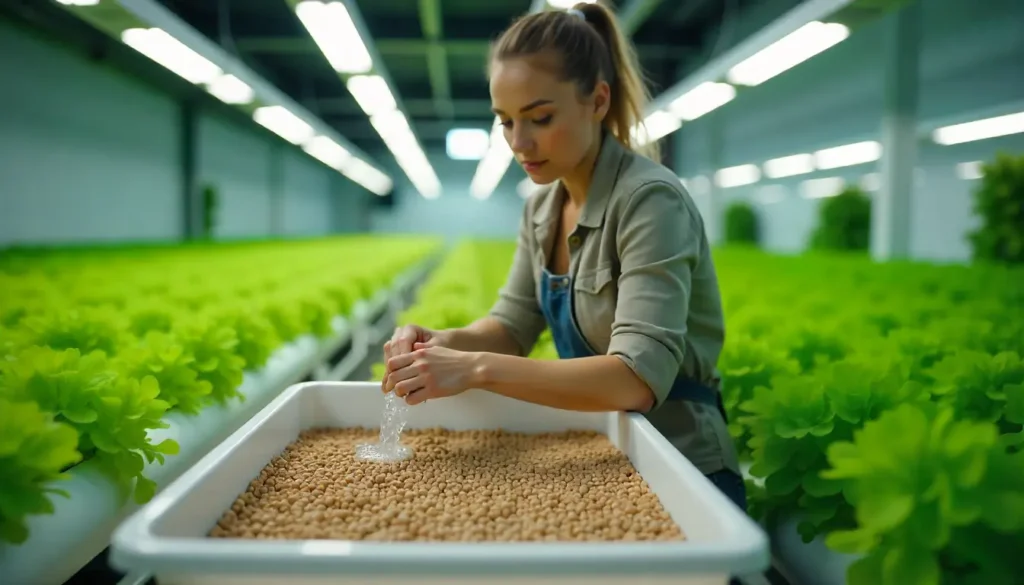
- How to Clean Hydroton Clay Pebbles for Reuse
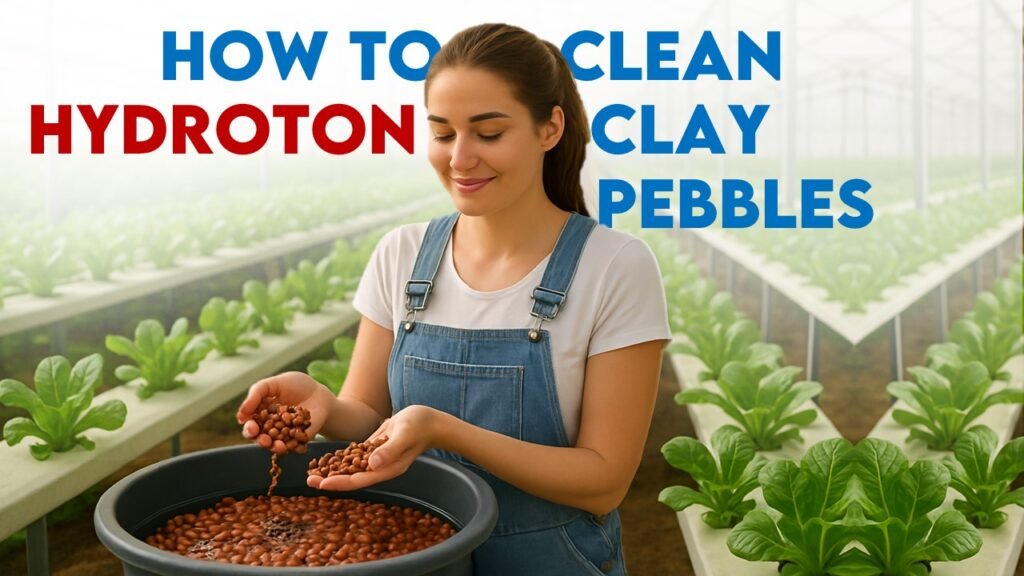
- Role of Grow Light in Hydroponics
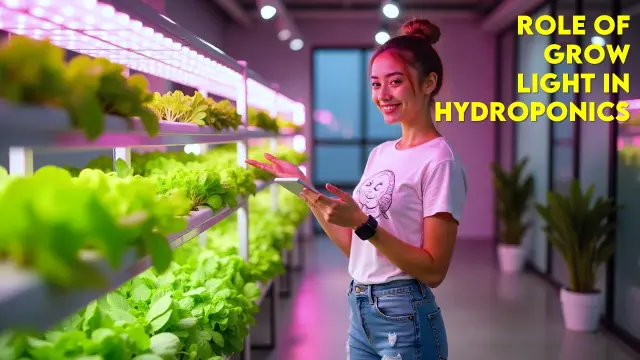
- How to Grow Hydroponic Peppers (Bell Peppers Hydroponics)
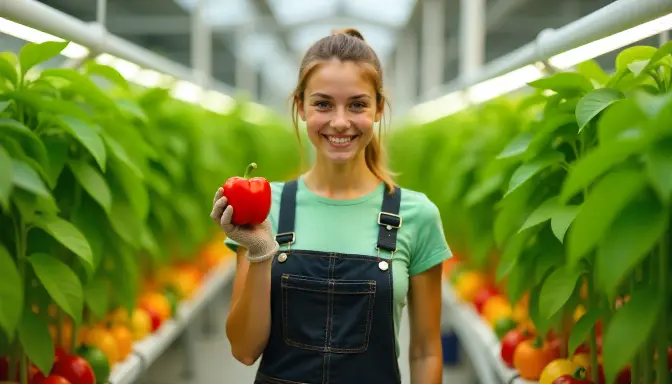
- Aeroponics vs Hydroponics vs Aquaponics
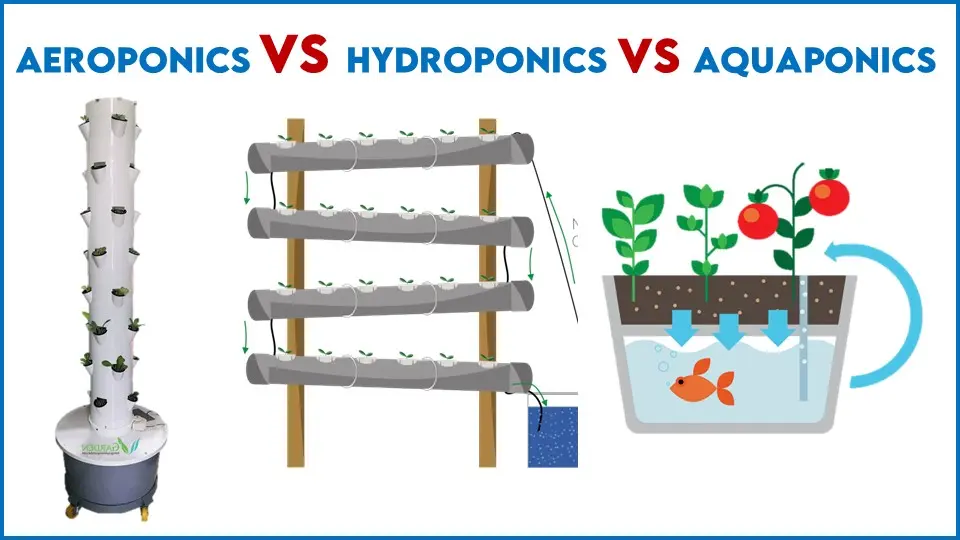
- Difference between NFT and DFT Hydroponics : What’s best for you?

- Can You Grow Watermelon Hydroponically : Hydroponic Watermelon

- Best Vegetables for Hydroponics System

Join Our Hydroponics Growers Group!
Connect with fellow hydroponics enthusiasts, share your ideas, ask questions, and grow together as a community.
👉 Join WhatsApp Group
